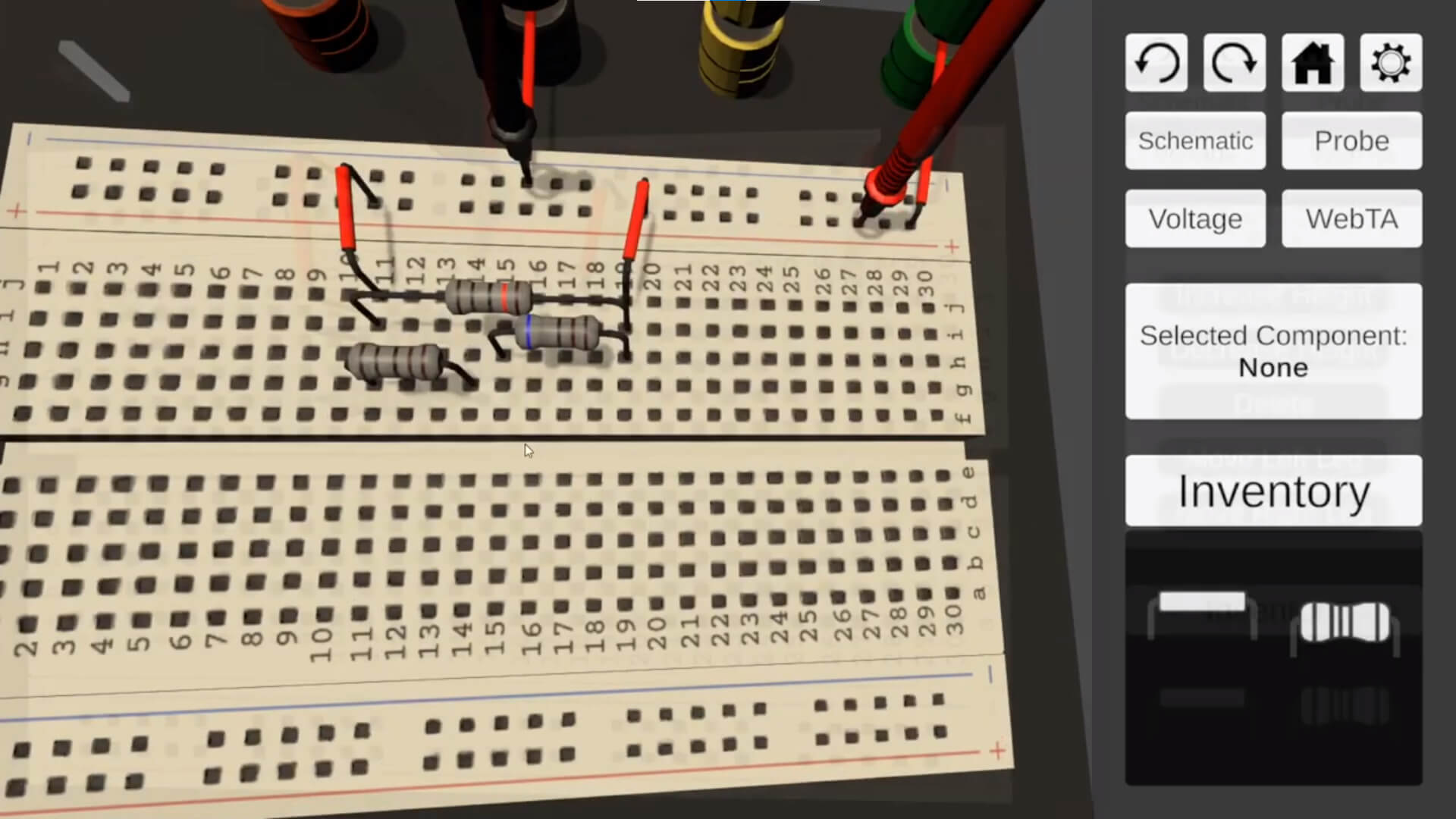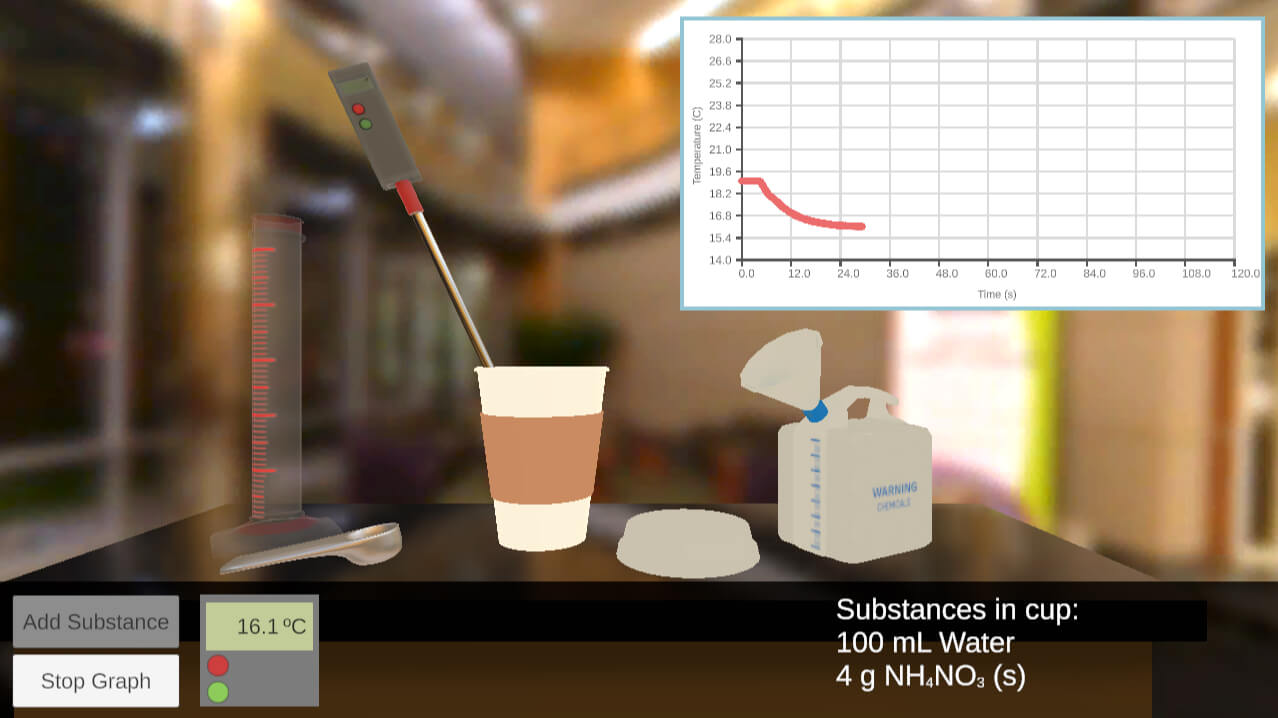December 14, 2020
Purdue’s forward-thinking virtual engineering and science lab initiative helped meet challenge of a global pandemic and more

A virtual “breadboard” enables Purdue students to study circuits using the same instruments and components they would in a physical lab. Breadboards are devices for prototyping electronics. (Photo provided)
Well before the reality of a global pandemic, Purdue was creating online versions of many of its engineering labs, so the College of Engineering’s virtual lab initiative didn’t start with COVID-19 in mind.
But it sure came in handy when the pandemic hit.
A motivating factor was a decade of growth in undergraduate and graduate engineering enrollment and a doubling of the number of online classes. On-campus labs were full and there was limited lab access online. The creation of virtual labs addressed both challenges.
“We had labs going day and night every day of the week to accommodate the demands on the physical labs,” said Michael Sangid, the engineering dean’s fellow leading the virtual lab initiative.
The process started with structure and materials in aeronautics and astronautics in 2017 and continued with additional courses in aeronautics and astronautics, civil engineering, chemical engineering and electrical and computer engineering. Sangid, the Elmer F. Bruhn Associate Professor of Aeronautics and Astronautics and an associate professor of materials engineering by courtesy, received a provost’s instructional innovation award to help fund the effort. There was funding enough to look at doing general chemistry labs, too, which made sense since most engineering students take general chemistry, in addition to chemistry students and other science students. There’s more planned, especially labs for other large foundational courses.
"Virtual and hybrid labs are of critical importance to the School of Electrical and Computer Engineering and the College of Engineering, and we plan to further expand and strengthen such efforts in the near future," said Dimitrios Peroulis, head and Reilly Professor of Electrical and Computer Engineering and a special adviser on online learning to the dean of engineering.
The events of 2020 make it clear why that’s a good thing.
“It's really saved us that we were already doing so much of that,” said Mark Johnson, Electrical and Computer Engineering’s director of instructional laboratories. “The pandemic forced us to do it at a scale that we hadn’t anticipated doing so quickly. We’re able to do almost everything we were able to do in person.”
 Nearly 3,000 Purdue students have used the virtual calorimetrics lab this fall to learn about heat and chemical reactions. Students can collect, run calculations on and graph data just like in a physical lab. (Photo provided)
Nearly 3,000 Purdue students have used the virtual calorimetrics lab this fall to learn about heat and chemical reactions. Students can collect, run calculations on and graph data just like in a physical lab. (Photo provided)
Many of the virtual labs could more accurately be called remote or remote-controlled labs, Johnson said. Students working online can access and control actual lab equipment remotely. In other cases, they may purchase and do lab activities at home with, for instance, inexpensive USB-connected instrumentation modules and electronic components, which have become increasingly sophisticated and cost-effective in recent years.
Virtual labs are popular in circuits courses. In partnership with Purdue’s Envision Center, Electrical and Computer Engineering created a virtual lab that’s a 3-D environment students use to study and troubleshoot circuits on a “breadboard,” a device used for prototyping electronics. A similar virtual lab is in the works for a course in fabricating “system on a chip” computer chips.
Though it still has to be evaluated formally, early impressions are that students may even learn more from the virtual labs, which have some advantages, Sangid said. In some traditional physical labs, for example, one student works with a piece of equipment while the other students in a group watch. With the online labs, they all have the opportunity get their hands on, albeit remotely.
Students also can do more extensive and longer experiments in some cases, with tricks such as studying the deterioration of a structure over a period of years by accelerating time. They can likewise do some experiments repeatedly and break materials or mix chemicals that would be expensive to break or dangerous to mix in a nonvirtual lab. Since the online labs are readily accessible, students can tinker – and potentially learn – more, Johnson said.
Chemistry focused on the calorimetrics lab where students measure the amount of heat released or absorbed during a chemical reaction by running reactions in water and measuring temperature changes.
“It's a standard type of lab that would be done in any general chemistry program,” said Jonathan Rienstra-Kiracofe, the associate professor of chemistry practice who oversaw the project.
He worked with the Envision Center, which created the graphics and animations for the virtual lab, with its virtual cups, beakers, test tubes and more, and incorporated data from a series of actual chemical reactions. Students collect, run calculations on and graph the data just like in a physical lab. They can set up different chemical reactions and change the ingredients and amounts.
Given the urgency created by COVID-19, the Envision Center was able to work with Rienstra-Kiracofe to put together the simulation in a little over two months’ time. Nearly 3,000 students used it for their online lab assignments during the fall semester. Even post-pandemic, when students get back to the real-world labs, Rienstra-Kiracofe said, the virtual lab will be a valuable tool that students can use to prepare and practice, and thereby get more out of their physical lab experience.
Writer: Greg Kline, 765-494-8167, gkline@purdue.edu

